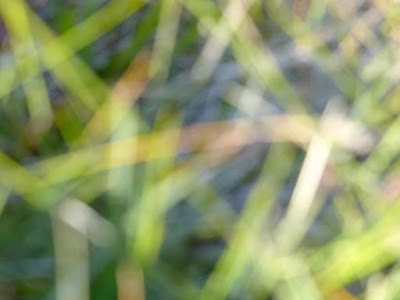Several people have commented lately on how similar my photos are to my paintings. Which influences the other?
I think of some photos I took at the Baer Art Center artist residency in Iceland this past July. I was sitting on a grassy hill right on the edge of the fiord. My camera somehow ended up in the grass beside me and I happened to take a photo while it rested there. When I saw what I'd taken, I took about 80 more shots! The colours in the grasses were violet, pink, lavender, yellow and green. It was dizzying. I felt like I had opened a door into a wonderland, where the blades of grass were huge and indistinct. But most interestingly, they were transparent, overlapping each other.
Recently, I taught a Cold Wax and Oil painting workshop in Anchorage, Alaska. At the end of the workshop, a friend and I took a Glacier Cruise on Prince William Sound out of Whittier, south of Anchorage. At the end of the voyage, we came up close to Surprise Glacier, where I saw chunks of ice floating in the water, that our catamaran slid over. I looked down, saw the depth of the ice below the surface, the light in the dark water, and began taking photos.
 |
| Gathering Light 28 60x60" Oil on canvas © 2015 Janice Mason Steeves |











Love both sets of images. The super-close-up grasses are fabulous, especially love the last of those. The ice paintings are really really cool (!).You are such an inspiration. Thank you
ReplyDeletegorgeous water and blues and whites and such a suggestive post thanks J.
ReplyDeleteLovely and exciting, Janice. Thank you again for your insight!!!xxx
ReplyDeleteThanks for all your posts Janice. I treasure the time and memory of the Anchorage workshop. It was so valuable in so many ways. many hugs, marion n
ReplyDelete